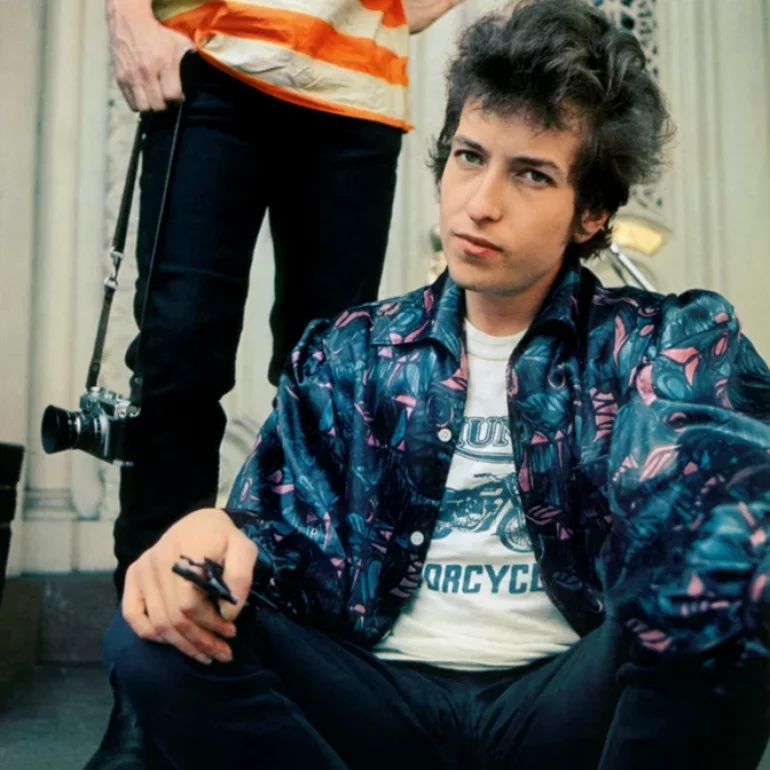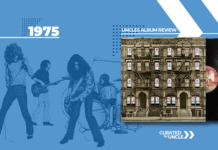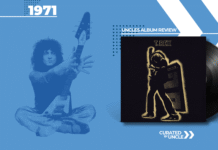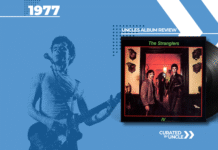Highway 61Revisited (1965): Bob Dylan Plugs In, Folk Purists Short-Circuit
In 1965, Bob Dylan did something unspeakable. He strapped on an electric guitar, played actual chords at a volume audible to humans, and with Highway 61 Revisited, effectively declared war on every earnest acoustic folk singer in a cardigan west of Greenwich Village. The result? A nine-track odyssey that somehow feels like it was written by a time-traveling beat poet with a head injury, yet remains one of the most influential albums in rock history.
Released on August 30, 1965, just a few months after Dylan was booed at the Newport Folk Festival for daring to use electricity like some kind of futuristic devil, Highway 61 Revisited is not just an album, it’s a scathing manifesto scribbled in crayon on the back of a napkin from a diner that probably doesn’t exist anymore.
Table of Contents
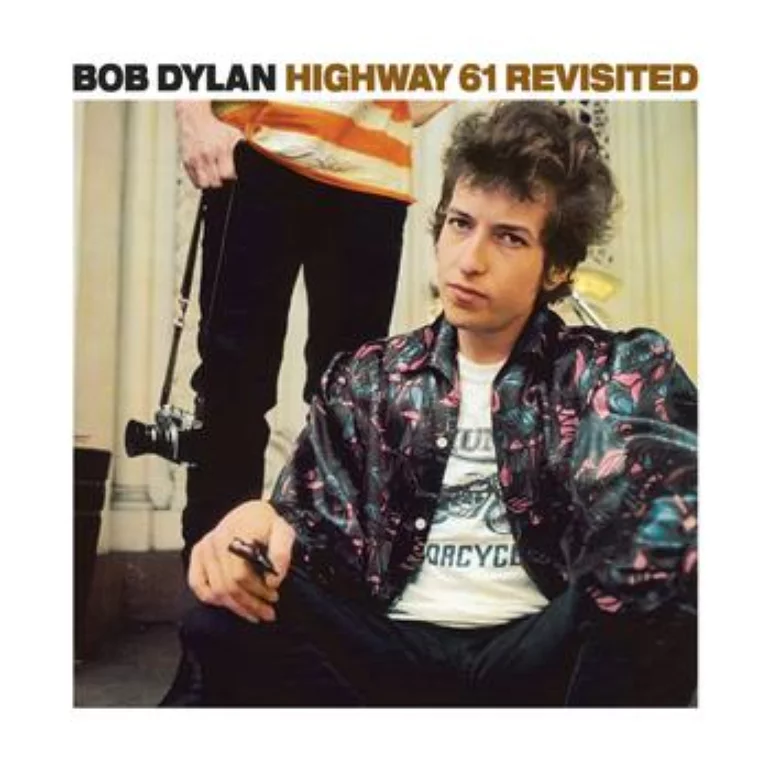
Tracklist of a Sonic Identity Crisis (And We Love It)
- Like a Rolling Stone – Six minutes of existential dread you can tap your foot to. Arguably the best “go screw yourself” anthem ever recorded, wrapped in jangly organ sounds and venom-laced vocals. “How does it feel?” It feels like folk music just got kicked in the teeth.
- Tombstone Blues – A rock & roll fever dream where Jack the Ripper runs HR and the reincarnated soul of Napoleon works at a car dealership. The lyrics are a Mad Libs nightmare, and yet it’s glorious.
- It Takes a Lot to Laugh, It Takes a Train to Cry – Bluesy, lazy, and irresistibly sleazy. Dylan sounds like he just woke up in a train station toilet and is in no rush to explain himself.
- From a Buick 6 – A love song, if your idea of romance involves blackouts, frying pans, and roadkill Americana.
- Ballad of a Thin Man – If Kafka had joined a bar band, this would be his magnum opus. “Something is happening here, but you don’t know what it is, do you, Mr. Jones?” Translation: you’re the idiot, and Dylan knows it.
- Queen Jane Approximately – Simultaneously tender and cruel. Queen Jane is either a jaded society girl or America itself on a bender. Dylan doesn’t clarify. He never does.
- Highway 61 Revisited – The title track where biblical characters, gunshots, and circus imagery share space like it’s a particularly intense acid trip at a Bible study group. Also, Dylan uses a siren whistle. Unironically.
- Just Like Tom Thumb’s Blues – Misery has never sounded so lyrical. Set in Juarez (because of course it is), this is Dylan at his most beautifully bleak. Drink whiskey, light a cigarette, stare into the abyss.
- Desolation Row – Eleven minutes of surrealist genius that will make you question your sanity, your education, and whether any of this is real. There are no choruses. Just visions. Lots of them. Some may require therapy.
Highway 61: Not Just a Road, a State of Mind
So, what is Highway 61 Revisited really about? Apart from being a cross between a folk apocalypse and a surrealist comedy sketch, it’s a sonic rejection of the boxes critics tried to shove Dylan into. Named after the highway that connects Dylan’s hometown in Minnesota to the Mississippi blues heartland, the album traces a cultural artery bleeding everything from Robert Johnson’s ghost to Elvis’s sneer.
This was Dylan kicking down the salon doors of folk righteousness with a fuzz pedal and a harmonica, declaring, “We’re not in Pete Seeger’s backyard anymore.”
The Dylan Evolution: From Prophet to Smart-Ass
Before Highway 61 Revisited, Dylan was the voice of a generation. After it, he was the voice of a generation that had started smoking stronger stuff.
His earlier albums The Freewheelin’ Bob Dylan, The Times They Are a-Changin’ had sincerity. Grit. Acoustic guitar strings and moral high grounds. But Highway 61? This was Dylan snatching his halo off, using it as a frisbee, and scoring a touchdown on the lawn of poetic rebellion.
Critics at the time were bewildered. The folk scene was scandalised. Imagine Gandhi turning up at a peace rally riding a Harley and chucking fireworks. That level of confusion.
Production: Chaos, Cigarettes and Genius
Recorded in New York with producer Bob Johnston, the sessions were reportedly just short of a nervous breakdown. Keyboardist Al Kooper famously bluffed his way onto “Like a Rolling Stone” by pretending to be a session musician. Turns out, bluffed organ solos can change the face of rock music.
Guitarist Mike Bloomfield of the Paul Butterfield Blues Band added blues licks so sharp they might legally qualify as assault.
Cultural Fallout: Folk Implodes, Rock Ascends
After this album, nothing was the same.
Folkies cried betrayal. Rock critics lost their collective minds in a flurry of metaphors. The Beatles took notes. Springsteen took life lessons. Every singer-songwriter from Neil Young to Patti Smith owes some spiritual tax to this record.
Highway 61 Revisited wasn’t just an album it was a seismic shift that made it okay to be lyrically weird, politically opaque, and musically unhinged.
Legacy: Still a Rolling Stone
Nearly 60 years later, the album still slaps in the face, mostly. It’s in the Library of Congress. It’s in the DNA of every half-decent lyricist. Rolling Stone Magazine predictably ranked Like a Rolling Stone as the greatest song of all time, presumably after a ritualistic groupthink ceremony involving incense and denim jackets.
My Final Thoughts: Genius or Gibberish? Yes.
Listening to Highway 61 Revisited is like having a poet scream riddles at you while juggling flaming guitars. It’s chaotic, brilliant, abrasive, and timeless. Dylan may never tell you what his songs mean and if you ask, he’ll probably insult your haircut, but the album endures because it reflects the messy, strange, often infuriating nature of being alive.
In other words: it’s not just a record. It’s a litmus test. If you don’t like it, maybe you’re Mr. Jones.

If You Like Highway 61 Revisited, I Recommend These Albums:
Blonde on Blonde – Bob Dylan (1966) – If Highway 61 was Dylan cracking wise, this is him unravelling with a grin and a typewriter.
Bringing It All Back Home – Bob Dylan (1965) – The electric jolt before Highway 61, when folk met rock and got a buzzcut.
After the Gold Rush – Neil Young (1970) – Like Dylan moved north, got moodier, and brought a piano to the acid trip.

Highway 61 Revisited
| # | Track | Duration |
|---|---|---|
| 1 |
Like a Rolling Stone
Bob Dylan
|
06:11 |
| 2 |
Tombstone Blues
Bob Dylan
|
06:00 |
| 3 |
It Takes a Lot to Laugh, It Takes a Train to Cry
Bob Dylan
|
04:09 |
| 4 |
From a Buick 6
Bob Dylan
|
03:19 |
| 5 |
Ballad of a Thin Man
Bob Dylan
|
05:57 |
| 6 |
Queen Jane Approximately
Bob Dylan
|
05:31 |
| 7 |
Highway 61 Revisited
Bob Dylan
|
03:30 |
| 8 |
Just Like Tom Thumb's Blues
Bob Dylan
|
05:31 |
| 9 |
Desolation Row
Bob Dylan
|
11:19 |



